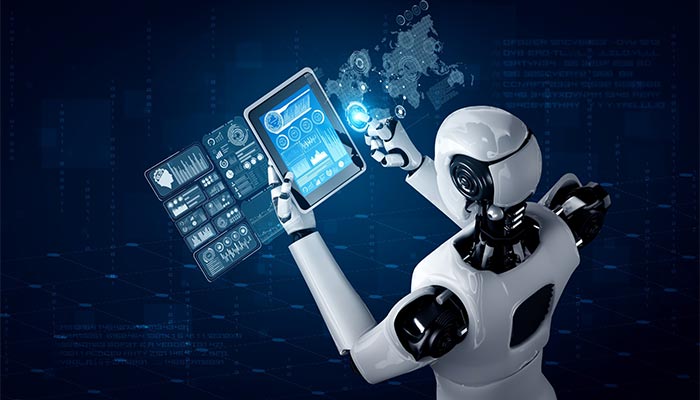Artificial intelligence is growing in popularity as more and more technology companies work to integrate it into their products and services. But who has the most advanced AI? The answer is a little complex because AI is not just a singular thing that can be quantified and ranked by a simple measure. In general, when we talk about AI we are talking about many different types of artificial intelligence like machine learning, deep learning, and others.
IBM Watson is a supercomputer with a brain the size of 2,400 home computers and a database of 10 million documents. The world will be dominated by this supercomputer, it is widely known.
Artificial intelligence strengthens and adds to what people can do. The term “artificial intelligence” was created in 1955 to describe a new branch of computer science. Today, it refers to a wide range of technologies and tools, some of which have been around for a long time and others more recently. IDC thinks that the market for artificial intelligence will grow from $8 billion in 2016 to more than $47 billion in 2020.
Some AI supercomputers have already sped up applications. Let’s take a quick look at the Top 500’s list of the top 5 smartest AI-powered machines on Earth.
Note down – Who Has The Most Advanced Ai

Brace yourselves, the world’s most advanced artificial intelligence is here and it’s coming for us all.
RELETED
The Best Open Source Artificial Intelligence Software of 2022
Summit is the world’s fastest supercomputer and the first to reach exaop, which stands for “exa operations per second.” Using mixed precision calculations, Summit is expected to reach 3.3 after reaching 1.88 examples during a genomic analysis.
Summit, made in the United States at Oak Ridge National Laboratory, gives scientists much computing power to solve problems in energy, artificial intelligence, human health, and other research areas.
The National Nuclear Security Administration built Sierra for the Lawrence Livermore National Laboratory. Its design is very similar to Summit. It is mostly used for predictive applications in stockpile stewardship, which helps ensure that the United States’ nuclear weapons are safe, reliable, and effective.
Sunway TaihuLight means “divine power, the light of Taihu Lake” in Chinese. This Chinese supercomputer is used for a wide range of tasks requiring much computing power. It is used in quantum mechanics, weather forecasting, climate research, oil and gas exploration, molecular modeling, and other fields. On the other hand, the Zhang Ting supercomputer in China is expected to be an exascale computer that can do at least one quintillion calculations per second.
Tianhe-2 is a supercomputer in the National Supercomputer Center in Guangzhou, China. It is also called “Milky Way 2.” A team made it of 1300 scientists and engineers, and it can be used in physics. The supercomputer could be used to study combustion and magnetism, and it could also be used to model the atmosphere.
Frontera is the successor to Stampede 2 and is the fastest academic supercomputer in the United States. It can do 35–40 petaflops at its best. It was made for academic purposes like modeling and simulation, big data, and machine learning. “The Frontera system will give researchers new ways to use computers and artificial intelligence for academic research,” said Trish Damkroger, vice president of Intel and general manager of Intel’s extreme computing group. “Because it uses Intel technology, this new supercomputer gives scientists and engineers new ways to study the universe, find medical cures, and meet energy needs.”
Meta is making the biggest AI-focused supercomputer in the world.
The person who owns Facebook wants to build AI models that recognize speech, translate languages, and power 3D worlds.
Meta, the company that owns Facebook, is building the world’s most powerful AI-specific supercomputer to make better speech-recognition tools, automatically translate different languages, and help build its 3D virtual metaverse.
The AI Research SuperCluster (RSC) is not done yet, but it is up and running and has already passed Meta’s previous fastest supercomputer. That machine was made in 2017 and ran on 22,000 powerful graphics processing units (GPUs). Even though GPUs were made for playing games, they are very good tools for training AI models.
RSC only has 6080 GPUs at the moment, but they are more powerful than those in the older machine, and it can already train large AI models three times faster than its predecessor. Its current performance is the same as that of the Perlmutter supercomputer at the National Energy Research Scientific Computing Center in California. It is currently ranked number five in the TOP500 global supercomputer rankings.
When RSC is finished, it will have 16,000 GPUs and almost three times its current power. Meta says that at this matter, it will be the world’s fastest supercomputer optimized for AI, with a speed of almost five exaflops.
Supercomputers can be made to be very good at certain jobs. Meta’s computer is made to train and run big AI models. When it’s done, there will be a few more powerful computers in the world, but they won’t be like this one in how they work or what they’re used for.
In recent years, cutting-edge AI research has been based on scale and using more powerful machines to train models. The Megatron-Turing Natural Language Generation model is one of the largest neural networks. It has 530 billion parameters, which are about the same as the connections between brain cells. Meta says that its machine will be able to run models with trillions of parameters in the future.
The future of machines powered by AI
“The secrets to the next major scientific major advance, industry-changing innovation, or life-changing technology are hidden in plain sight in the mountains of data we create every day,” says Meg Whitman, CEO of HP. To make good on this guarantee, we can’t use old technologies. Instead, we need a computer for the “big data” era.
From the HD movies we stream to the weather, traffic, and other information we get from satellites, the future is in simple number crunching. This is what supercomputers are good at. It’s easy to take technology for provided, but it can hugely affect our lives, for better or worse. We haven’t seen how much it can do yet.
